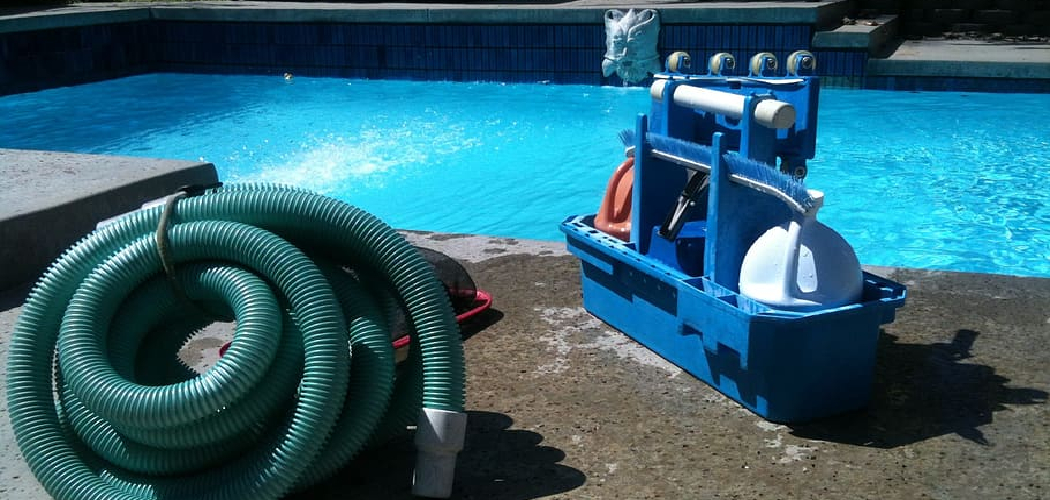Do you have a swimming pool in your backyard that you’re trying to keep in tip-top condition? One of the most important things is keeping an eye out for air leaks in the plumbing system. Not only do these leaks encourage evaporation, but they can also cause all sorts of problems if left unchecked, resulting in expensive repairs down the line.
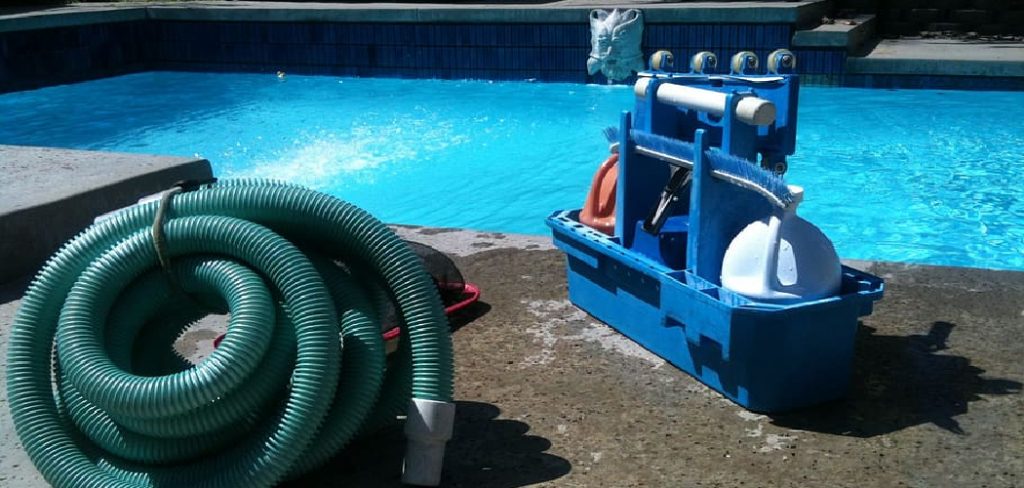
The good news is there are a few ways to easily detect and stop air leaks from sneaking into your pool’s plumbing system. In this post, we have all the step-by-step instructions on how to find air leaks in pool plumbing so that you can extend the life of your swimming pool!
How Do You Detect Air Leaks in Pool Plumbing?
One of the most effective ways to detect air leaks in pool plumbing is by using a vacuum pump. This device creates a vacuum within the pipe system and can easily detect any leaks that may be present. To use a vacuum pump, you will need to turn off all pumps and valves connected to the pool plumbing system before proceeding.
You should then attach the vacuum pump directly to one end of the pipe, ensuring there are no air bubbles or gaps showing between the connection points. Once connected, you can start up the pump and watch for any signs of air leakage. If an air leak is detected, it is important to take steps immediately to repair it before further damage occurs.
It is also possible to use soap, detergent, or a leak-detection solution to find any air leaks present in the pool plumbing. The method is fairly simple and requires mixing up a small amount of the chosen liquid with water before pouring it onto different areas of the plumbing system under pressure. If any bubbles appear, this indicates that an air leak may be present and should be investigated further.
Finally, you can listen to any hissing noises to detect any possible air leaks in your pool plumbing system. This method is more difficult than the others as it relies on your hearing rather than visual cues, but when done properly can be just as effective at finding any potential issues. To do this, turn off all pumps and valves connected to the system and begin listening carefully along each section of the pipe for any loud hissing or whistling sounds.
9 Methods How to Find Air Leaks in Pool Plumbing
1. Use Soapy Water
The most common way to find air leaks is to use soapy water. Simply mix some dish soap with water in a spray bottle and then spray it around all of the joints and connections in your pool plumbing. If there is an air leak, you will see bubbles forming.
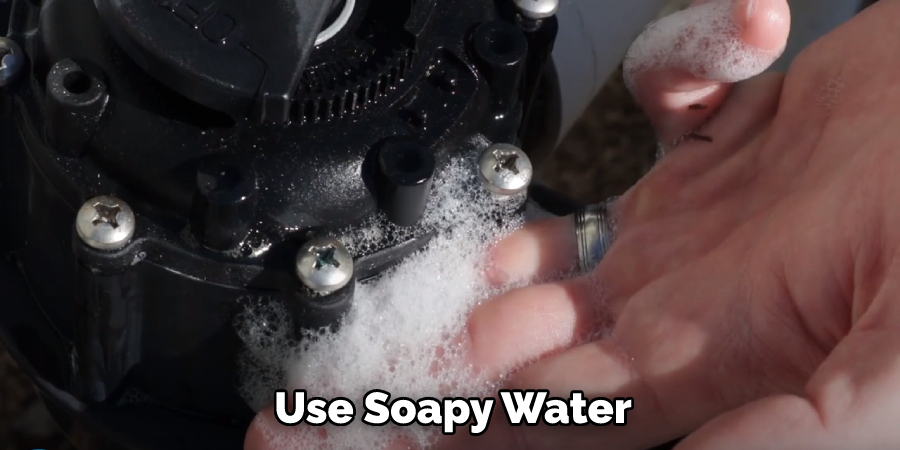
If the bubbles grow in size, then it’s a sign that you have a bigger air leak. To fix this, tighten any loose connections or replace any damaged parts. Although this is a simple solution, it may take some time and effort to find all of the air leaks. Make sure to be thorough and check all of the areas around your pool plumbing.
2. Use a Stethoscope
If you cannot find any bubbles with the soapy water method, you can try using a stethoscope. Place the stethoscope on each joint and connection in your pool plumbing, and then listen for any hissing or bubbling sounds.
If you can hear any, that particular connection is likely leaking and should be replaced. Make sure to listen to all the connections in the pipes, including the ones at the pump and filter. If you don’t have a stethoscope, try using a piece of PVC pipe to amplify the sound. While this will not provide a clear indication of where the air leak is, it can be helpful in pinpointing potential areas.
Be sure to check all valves and connections for any air leaks. If you find a leaky connection, replace the O-ring or sealant to fix it. It is important to fix any air leaks in your pool plumbing as soon as possible so that you can maintain efficient circulation.
3. Use a UV Leak Detector
Another way to find air leaks is to use a UV leak detector. This is a special device that uses ultraviolet light to detect leaks. Simply turn it on and scan all of the joints and connections in your pool plumbing. If there is a leak, the UV light will show it up as a bright spot.
The UV detector is an excellent way to find small leaks that you might not be able to detect with the soap and water method. Be sure to wear protective goggles when using the UV detector, as the light can be damaging to your eyes.
4. Use an Infrared Camera
An infrared camera can also be used to detect air leaks in pool plumbing. This device works by detecting heat signatures, so it will show up in any area where there is an abnormal amount of heat coming from. This can indicate an air leak.
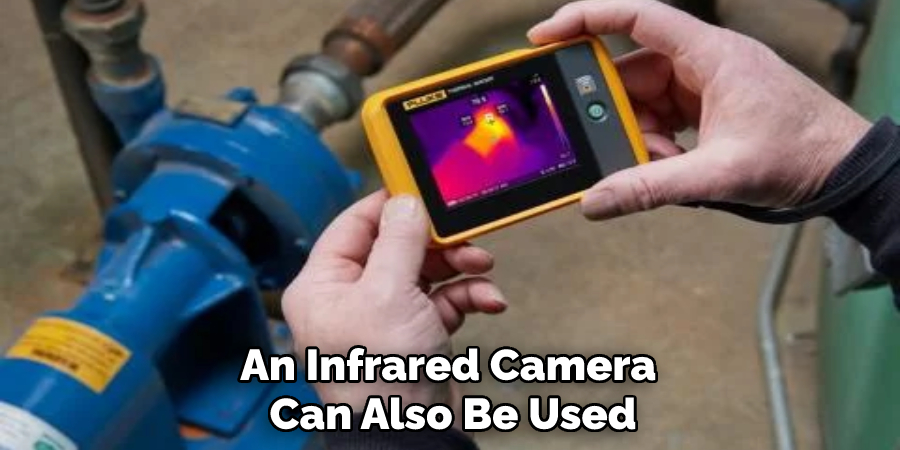
The camera is expensive, but it may be worth the investment if you need to pinpoint exactly where an air leak is occurring. Be sure to follow the manufacturer’s instructions when using this device. Although it can be used to detect air leaks, it should not be used as a replacement for other methods of detection. It is best used to confirm that a suspected air leak is an air leak.
5. Use a Thermal Imaging Camera
A thermal imaging camera works in a similar way to an infrared camera but can provide even more detail. This type of camera can show not only where there is an abnormal amount of heat but also how much heat is coming from that area.
This can be helpful in pinpointing the location of an air leak. It will be able to detect small, hard-to-find air leaks that other methods may not find. Be sure to use a camera specifically designed for detecting air leaks, as it will provide the most accurate results.
Also, make sure that you follow any manufacturer instructions for the use of the camera to ensure it is used correctly. Once you have located the air leak with the thermal imaging camera, it can then be sealed or repaired as needed to prevent further air loss.
6. Use a Blower Door Test
A blower door test is a specialized test that is often used to find air leaks in homes but can also be used to find leaks in pool plumbing. This test involves sealing all doors and windows in the area and then using a fan to create negative pressure inside. This will cause any air leaks to become evident as they will suck the air out of the room through the leak.
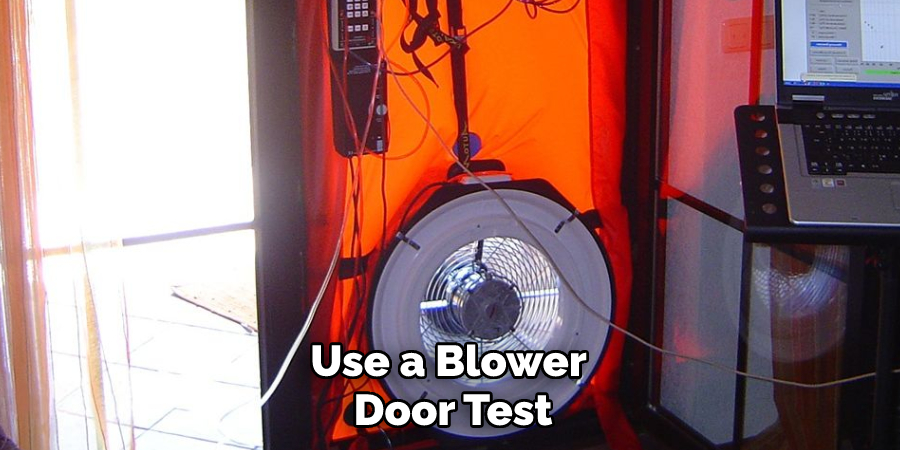
7. Use an Endoscope
An endoscope is a special device that can be inserted into the plumbing to check for leaks. This is a great option for finding small cracks in the pipes that are difficult to detect with the naked eye.
The endoscope should be inserted at all joints and any other areas that may be prone to leakage. This will enable you to see if there is any water leaking out, and how much. The endoscope can also be used to view any other potential problem areas in the plumbing.
8. Use a Smoke Test
The smoke test is an effective way to find air leaks in pool plumbing. This involves using a special type of smoke machine, which is designed to emit a non-toxic smoke that will rise into the air and reveal any areas of escaping air. Begin with the pump and filter, then move on to the pipes and valves.
While smoke machines are a great way to find leaks, the method is not 100% foolproof and may require some experimentation. And remember: always make sure the pool is turned off before the smoke test! Make sure to wear protective clothing and eye protection. Additionally, never smoke test pressurized systems, as the sudden release of pressure can be very dangerous.
9. Use a Pressure Test
The pressure test is another useful way to find air leaks in pool plumbing. This involves applying pressure to the system and then measuring any drop in pressure over a period of time. If there is an air leak, the pressure will drop, indicating that the system needs repair. To perform a pressure test, you’ll need to attach a pressure gauge to the return side of the plumbing and then turn on the pump.
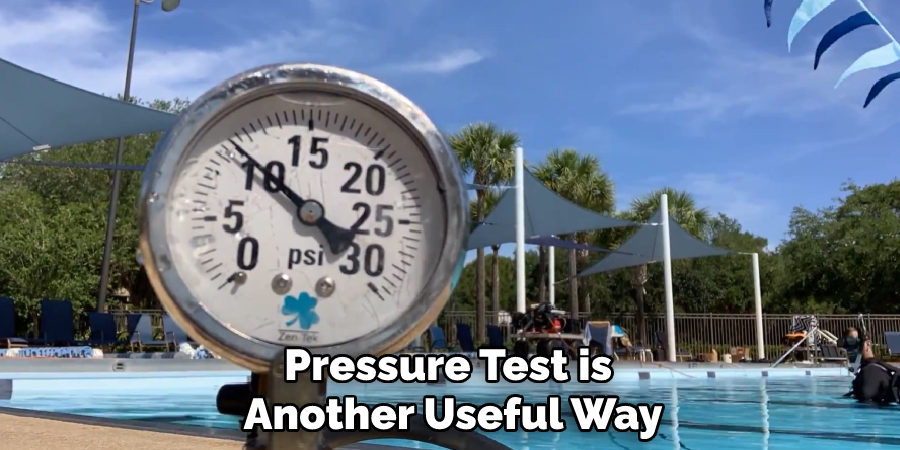
Conclusion
In conclusion, detecting pool plumbing leaks is a critical part of ensuring that your pool remains in excellent condition. Using the tips highlighted above for how to find air leaks in pool plumbing, you can keep your pool running smoothly and prevent higher energy costs from using inefficient equipment.
Furthermore, properly identifying and fixing an air leak in your swimming pool can save you time, money, and effort in the long run and may even increase the lifespan of your pool components. Remember to always consider safety precautions when performing repairs or maintenance at home! With these techniques to find air leaks in all the right places, you can rest assured that your swimming pool is running efficiently as possible.

